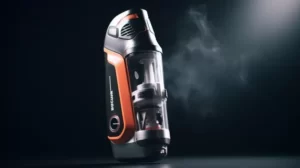More than 9 million Americans unknowingly increase their risk of cancer daily by using smokeless tobacco products like chewing tobacco and snuff. These products contain a potent carcinogenic compound called (S)-NNN, which falls under the category of compounds called nitrosamines. Although nitrosamines are found in some foods like beer and bacon, the levels in smokeless tobacco are alarmingly more concentrated. Young people are especially under the misconception that smokeless tobacco is a safer form of tobacco than cigarettes. This couldn’t be further from the truth.
A breakthrough study at the University of Minnesota revealed the first example of a potent oral cavity carcinogen present in smokeless tobacco. Researcher Stephen Hecht, who led the research, emphasizes the importance of the results considering the growing use of smokeless tobacco worldwide.
Previous studies have already established strong connections between chewing tobacco and cancers of the pancreas, mouth, and esophagus. While it was recognized that smokeless tobacco is a source of various carcinogens, this is the first compound with a clear link to mouth cancer.
The Deadly Carcinogen: (S)-NNN
(S)-NNN is a byproduct of the tobacco curing process and is a known cause of oral cancer. Hecht notes that the most popular brands of smokeless tobacco sold in the U.S. have unacceptably high levels of this particular carcinogen. Addressing this issue should be of utmost importance. Decreasing the levels of this hazardous compound in smokeless tobacco products or eliminating it altogether could save millions of users from developing cancer.
According to Hecht, some manufacturers have already managed to reduce the levels of (S)-NNN in their products, suggesting that it wouldn’t be challenging to entirely eliminate it.
Other Dangers of Smokeless Tobacco
Mouth cancer caused by (S)-NNN isn’t the only danger posed by smokeless tobacco products. The dangers of smokeless tobacco extend beyond carcinogen exposure — with adverse effects ranging from addiction to dental issues, and even death in extreme cases.
- Addiction: Like cigarettes, smokeless tobacco products contain nicotine, making them highly addictive. This can lead to a lifelong habit that is hard to break, and those who try to quit are often met with intense withdrawal symptoms. Read more about nicotine addiction here.
-
Dental issues: Regular use of smokeless tobacco can lead to dental problems like gum recession, tooth decay, cavities, and even tooth loss. The tobacco eat away at gum tissue causing it to recede and expose the roots of the teeth, leading to increased sensitivity, decay, and a higher risk of periodontal disease. Learn more about the dental issues caused by smokeless tobacco here.
-
Harmful chemicals and toxins: Along with (S)-NNN, smokeless tobacco contains over 3,000 chemicals and toxins, including lead, arsenic, and benzene. Many of these substances have been linked to various types of cancer.
-
Leukoplakia: This condition is characterized by the formation of white patches in the mouth and is commonly seen in users of smokeless tobacco. While some of these patches heal with time, others may be precancerous and can eventually develop into oral cancer.
The Bottom Line
Smokeless tobacco is not a safe substitute for cigarettes. It poses cancer threats, dental issues, and addiction challenges that rival or even surpass the dangers of smoking. The best choice for anyone concerned about their health is to avoid tobacco products altogether, including smokeless tobacco.
If you or a loved one are looking to quit the use of smokeless tobacco, you may want to use nicotine replacement therapy or seek out support groups for additional help. For tips on quitting smokeless tobacco, visit the American Cancer Society website here. Remember, it is never too late to quit and reduce your risk of developing cancer and other health issues related to tobacco use.



